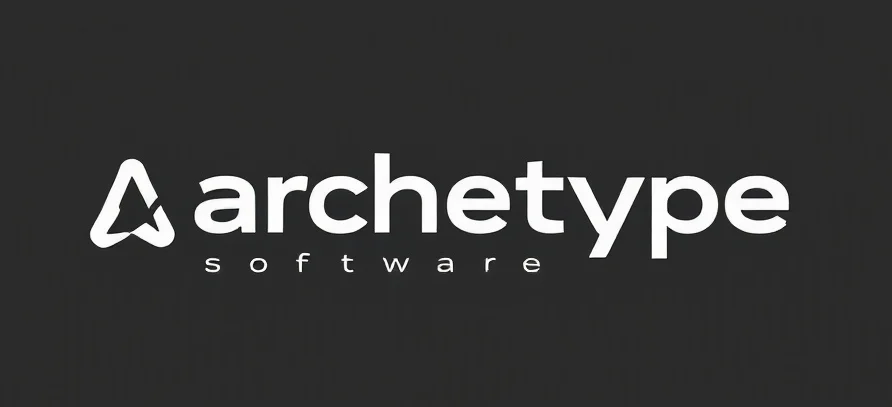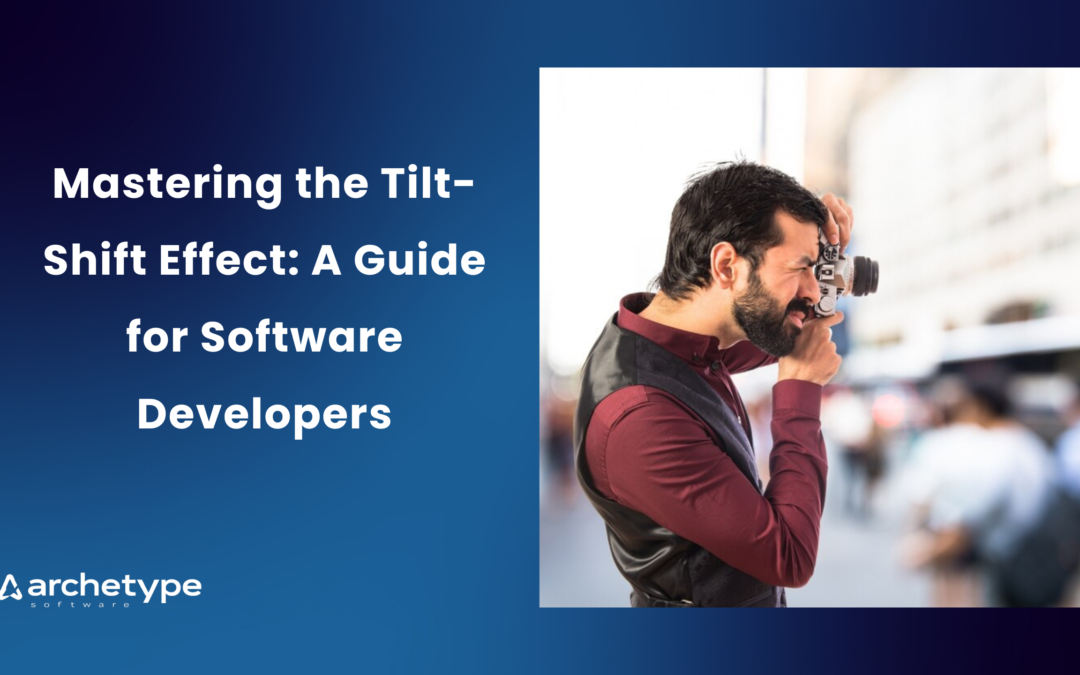The tilt-shift effect is a photographic technique that manipulates focus and depth of field to make real-world scenes appear as miniature models. Traditionally achieved with specialized lenses, this effect can now be replicated through software, offering developers and tech enthusiasts a creative avenue to enhance visual content.
Effect, developers can add a creative dimension to their projects, making visuals more compelling and engaging.
What is the Tilt-Shift Effect?

The tilt-shift effect manipulates focus and depth of field to isolate specific areas of a scene. This selective focus creates the appearance of a shallow depth of field, akin to what’s commonly observed in macro photography. When applied to larger scenes—like landscapes, cityscapes, or even bustling streets—this technique tricks the viewer’s eye into perceiving the subjects as tiny models. The result is often vibrant, toy-like imagery that captures attention and sparks curiosity.
This effect was originally crafted through physical tilt-shift lenses, which allow photographers to tilt the lens plane relative to the camera’s sensor and shift the perspective. However, with the rise of advanced photo editing tools, you can now achieve the same result using digital techniques.
Why Should Developers and Designers Care About Tilt-Shift?
While the tilt shift effect originated in photography, its applications extend well beyond. For developers, game designers, and UI/UX professionals, this effect offers an innovative way to make projects visually unique and engaging:
- User Interface Design: Enhance application interfaces with tilt-shift imagery, creating playful or artistic backgrounds.
- Game Environments: Simulate depth, highlight gameplay areas, or create a whimsical, miniature aesthetic for levels.
- Marketing and Branding: Use tilt-shift visuals to stand out in digital campaigns, from social media graphics to landing page designs.
This versatile effect allows developers to combine technical expertise with creative expression, pushing boundaries in software and design projects.
How to Create the Tilt-Shift Effect Using Software

Modern software tools, especially Adobe Photoshop, simplify the process of applying a tilt-shift effect. Below, we’ll walk through the steps to create this striking visual effect.
1. Select the Right Image
Choosing the right photograph is crucial for a successful tilt shift effect. For best results:
- Opt for high-resolution images with a clear focal point.
- Choose scenes shot from an elevated perspective, such as cityscapes, streets, or fields. The higher angle mimics the viewpoint of looking at a miniature set.
- Look for vibrant and detailed scenes, as these add to the miniature illusion.
2. Open the Image in Photoshop
After selecting your image:
- Import it into Photoshop by dragging it into the workspace or opening it via
File > Open.
3. Apply the Tilt-Shift Blur
The core of the tilt-shift effect lies in the blur manipulation. To apply this in Photoshop:
- Go to
Filter > Blur Gallery > Tilt-Shift. - A control overlay will appear on your image. Adjust the blur parameters as follows:
- Focus Area: Use the central lines to define the in-focus area.
- Transition Blur: Adjust the outer lines to control how quickly the blur transitions.
- Blur Intensity: Drag the blur slider to increase or decrease the blur strength. A more pronounced blur creates a stronger miniature effect.
4. Enhance the Miniature Look
The tilt-shift blur alone creates the foundational effect, but fine-tuning the image takes it to the next level:
- Boost Saturation and Contrast: Miniatures often appear vibrant due to their smaller scale. Increase these properties using Photoshop’s adjustment tools under
Image > Adjustments. - Adjust Brightness: Lighten the image slightly to mimic the bright lighting often associated with dioramas or miniature models.
- Add Sharpening: Sharpen the in-focus area to further isolate it from the blurred background.
5. Finalize and Save
After tweaking the image to your satisfaction:
- Review the blur and adjustments to ensure a balanced, realistic effect.
- Save your work in a high-quality format, such as PNG or JPEG, to preserve details.
For a more in-depth walkthrough, you can explore the original guide on creating the tilt shift effect here.
Creative Applications for Developers
Tilt-shift photography is not just a creative exercise; it has tangible applications in software and design. Let’s look at some key areas where this effect can shine:
1. UI/UX Design
Incorporate tilt-shift visuals as dynamic backgrounds for apps or websites. The dreamy, artistic quality of these images can evoke emotion and set your product apart from competitors. Consider using this effect in headers, splash screens, or hero sections.
2. Game Development
For game developers, tilt-shift can add a unique aesthetic to environments. Imagine a whimsical game where entire levels look like toy cities or tabletop worlds. This effect can also be used to focus the player’s attention on specific gameplay areas while subtly blurring the rest.
3. Marketing and Branding
Tilt-shift imagery draws attention due to its distinctive look. Leverage this for promotional content, whether on social media, blogs, or advertisements. For example, you could create a playful campaign where real-life settings are transformed into charming miniatures.
4. Educational Tools
Developers creating educational software or training platforms can use tilt-shift visuals to make learning content more engaging. For instance, geographic tools could present aerial views of cities or landscapes in a miniature style.
Tips for Achieving the Best Results
- Experiment with Angles: The tilt-shift effect works best with elevated viewpoints. Try experimenting with different angles to see what creates the most convincing miniature look.
- Test Various Images: Some images naturally lend themselves to the tilt-shift effect, while others may require more work. Practice with diverse scenes to find what works best.
- Combine Effects: Enhance the tilt-shift effect with other design elements, such as light overlays, color grading, or typography.
Checkout ProductScope AI’s Studio (and get 200 free studio credits)
Conclusion
The tilt-shift effect is a versatile and accessible tool that can elevate the visual impact of your projects. Whether you’re a developer looking to add flair to an app, a designer enhancing a website, or a game developer crafting unique aesthetics, mastering this effect offers immense creative potential. With tools like Adobe Photoshop, you can achieve professional-quality results without the need for expensive equipment. Start experimenting with the tilt-shift effect today and unlock a new dimension of creativity for your software projects.
For detailed instructions and examples, don’t forget to visit the original article on tilt-shift
FAQs
How to achieve the tilt-shift effect?
To achieve the tilt-shift effect, you can either use a tilt-shift lens or digital photo editing software like Adobe Photoshop. With a tilt-shift lens, adjust the angle and position of the lens to manipulate the plane of focus. In software, apply a selective blur to your image using tools such as the Tilt-Shift filter in Photoshop’s Blur Gallery. This simulates a shallow depth of field by keeping a part of the image in sharp focus while gradually blurring the surroundings.
What is the tilt-shift focus effect?
The tilt-shift focus effect is a technique used to create a selective focus in an image that mimics the shallow depth of field normally seen in close-up photography. This effect makes the scene look like a miniature model, with only a small strip of the image in focus, while the rest is blurred. It can be achieved using special tilt-shift lenses or through digital post-processing.
What are tilt-shift lenses good for?
Tilt-shift lenses are especially useful for architectural and landscape photography. They allow photographers to control the perspective and the plane of focus in an image more precisely than standard lenses. For architectural photography, they help in avoiding the convergence of parallel lines, like when shooting tall buildings. In landscape photography, they enable selective focus to draw attention to specific parts of the scene or to create a miniaturization effect.
What are the disadvantages of a tilt-shift lens?
The disadvantages of a tilt-shift lens include:
- Cost: Tilt-shift lenses are typically more expensive than standard lenses due to their specialized mechanics and lower production volumes.
- Complexity: Using a tilt-shift lens requires a higher level of skill and understanding of photographic principles. The process of adjusting the lens for the desired effect can be intricate and time-consuming.
- Limited Use: The specific capabilities of tilt-shift lenses, while powerful, are often not required in everyday photography, making them less versatile than more general-purpose lenses.
- Manual Focus: Most tilt-shift lenses do not support autofocus, requiring manual focus which can be challenging for some photographers, especially in dynamic or fast-paced shooting conditions.

